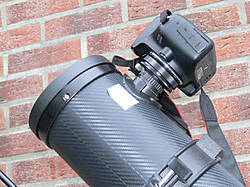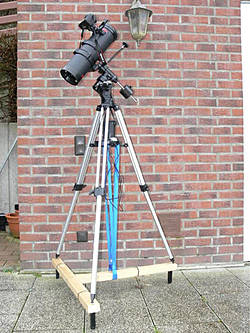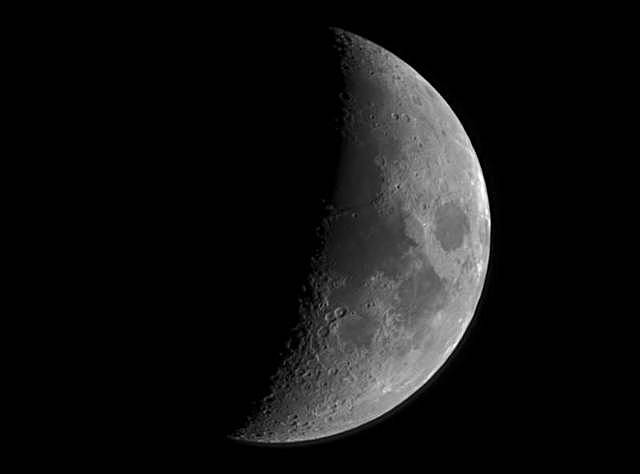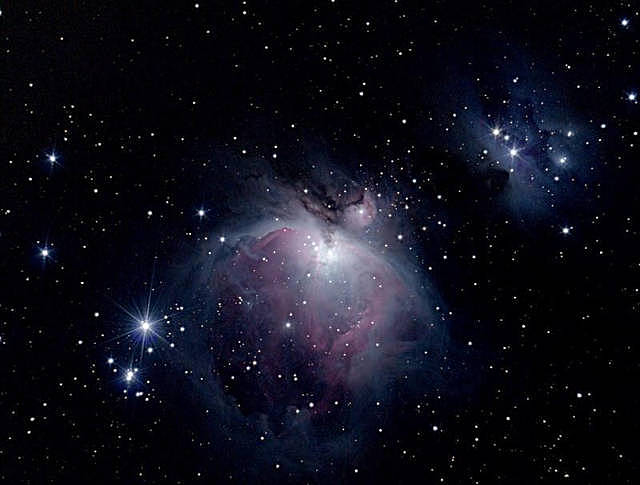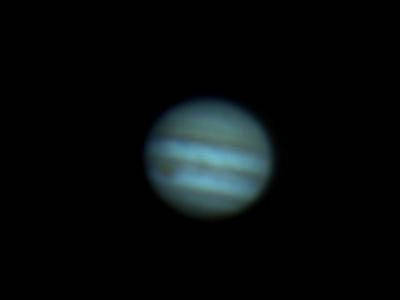I bought the Bresser Pluto / s over two years ago to show my children sun, moon and stars. Although I was generally interested in astronomy and space travel, I had no idea about telescopes. I chose the Bresser Pluto / s as a Newtonian telescope because "mirror telescope" sounded like Hubble to me and therefore "scientific". It also made a stable impression according to the price and, in my opinion, had equipment to start observing immediately.
Things like seeing craters on the moon, Jupiter moons, Venus phases or the Saturn rings in front of your eyes are also a different experience for children than just seeing them on a screen or in a magazine. The included equipment, such as several eyepieces, makes this already possible. Also, the Andromeda galaxy, which is visually hardly visible or only washed out, can be seen by the good light intensity (f / 4,4) of Pluto / s as a clear fog.
The biggest drawback to watching the sky was - no, not at Pluto - but the weather. Unfortunately, our Central European weather is not always suitable for spontaneous sky observations of the Orion Nebula. Therefore, I got the idea to record what you can see through the telescope, so that you can watch and show it later (for example, the next morning, because the children have to go to bed). That would be somehow "self-made".
That's why I bought a so-called moon and planet camera about a year ago. Adjusting the focuser was not a problem by using the 1.25 "receptacle. The focuser even has enough back focus to reduce the focal length to 0.63-fold with a reducing lens. This, I had learned, is helpful to get the full moon or the sun all the way to the small chip of a planetary camera.
First attempts were, well, sobering. Despite best attempts to focus, my shots were lazy and washed out. I have read that a Newtonian mirror telescope should be readjusted from time to time, especially when dealing with it a little harsher and often moving it. The Pluto is fully adjustable via adjusting screws on the main and secondary mirrors, which is not the case with all reflector telescopes in the same price range. With a small laser alignment, which I bought myself and some instructions from the Internet I had done that well. The next shots were better and I had tasted blood for astrophotography now.
Here it has proven to be an advantage that the Pluto is delivered with a parallactic mount. The EQ-Sky mount offered with the Pluto, in my opinion, is much more stable than the EQ-1, which comes along with other reflector telescopes of the same size. It has e.g. in the DEC axis, a worm wheel with which the telescope can also be rotated by 360 ° around this axis. And even the adjustment of the axes to the exact one - if you need it for photography - is not yet optimal, but still significantly better than an EQ-1. The mount is not overwhelmed with the Pluto / s and still has scope for accessories.
An RA axis tracking motor is relatively easy to attach to the mount and not only facilitates visual observation, as well as lunar, solar, and planetary shots, but in my experience also allows first shots of deep-sky objects that are not too dark. If you can keep the exposure time of the individual shots within limits (e.g. Orion Nebula, Globular Cluster). The high light intensity of the Pluto is here again an advantage. But you have to be aware that the tracking motor and the mount were not made with astrophotography in mind.
In order to extend the boundaries of photography a bit, I have set the tripod to a kind of T from construction slats with height-adjustable furniture feet. Thus, the tripod is beautifully stable and can be easily leveled. The plastic rack of the focuser of Pluto has unfortunately worn out quickly. So I had the idea to shorten the inner and outer part of the eyepiece and stick together again. This now serves as a receptacle for a 1.25 "female T2 connector. Any T2 accessory, including e.g. a non-rotating T2 helical excerpt with the e.g. Astro cameras with T2 thread can be very well focused.
After the modification of the OAZ, at the re-measurement of the focal position I came to the fact that the back focus would have to be large enough to connect with a short design T2 adapter and the T2 helical excerpt synonymous DSLR. This, of course, is miles away from Pluto's original intended application, but only trial makes sense. And since using a coma corrector was out of the question for the larger sensor of a DSLR, I at least dimmed Pluto's mirror on F / 6.25 with a simple black cardboard to keep the coma in check in the corners - at the expense of longer exposure time. To make longer deep-sky images, I've sent the EQ-Sky on recovery and attached the Pluto / s on an EQ-5 with guide tube. That was no problem with Pluto's standard prism rail.
I tested on the Orion Nebula M42 / M43, the Pleiades and the area around Alnitak with the horse head nebula with single shots up to 90sec and total exposure times of over one hour each. The DSLR was an unmodified Canon 1300D. The results have pleasantly surprised me again, although I was already used a lot from "my" Pluto / s. Yes, in the corners you can still see residual coma and if you look closely, you can see that the DSLR was slightly tilted - I should probably have been more careful. But with a slight trimming of the image and a reduction of the resolution, images have emerged that I would not have expected from a "visual starter ball mirror".
Conclusion
When I bought the Bresser Pluto / s, I did not expect the telescope to take me that far - and certainly not to deep-sky photography with a DSLR. The Pluto is well suited to "spice it up". It is bright, adjustable and comes with a relatively stable mount. This compensates to a large extent for the somewhat blurred spherical mirror. For larger objects, this blur is hardly noticeable.
The full power of Pluto does not come by itself. You have to deal with it and maintain it. But if you want to study Pluto and learn, it is a good, versatile, upgradeable beginner's telescope at a great price. For me it will have a special place as my first real telescope, which has always pleasantly surprised me.

 Deutsch
Deutsch
 English
English
 Francais
Francais
 Español
Español
 Italiano
Italiano
 Nederlands
Nederlands
 Polski
Polski
